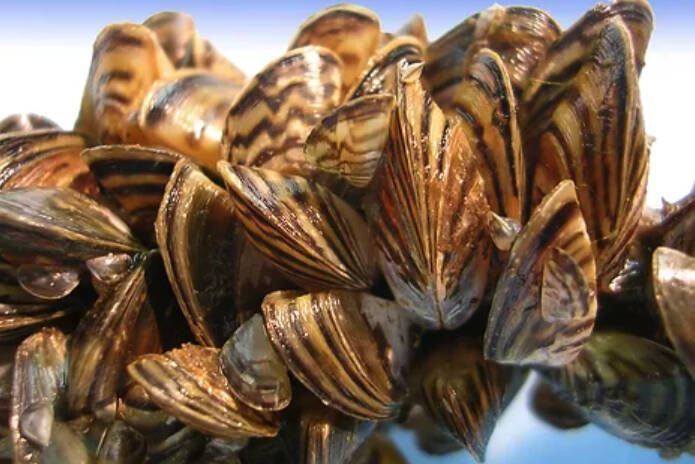The East Kootenay Invasive Species Council has message for anglers who enjoy ice fishing — invasive species management is a four season thing.
“You may think because it’s cold, frozen or dead that invasives are dominant, and the impacts may slip your mind this time of year, but invasive species can be spread from one body of water to the next even in winter”, said Megan MacPhee, EKISC’s Education and Communication Manager. “You may pick up some seeds during the bushwhack to the fishing spot, but there is also mud, debris and plants that are still thriving under the ice.This time of year something to be careful about is ice augers. Especially if you’re fishing in relatively shallow water, where the augers may actually reach down into the muck and dig into the lake bottom and pull up invasive plants and animals.”
MacPhee offers the following advice.
- Make sure you remove all bits and pieces of plant matter and muddy debris as it could be harbouring the larvae of the invasive Zebra Mussel or invasive plant seeds.
- Check anything that was on the bottom of the lake, suspended in the water or in a weedy area before moving to a different part of the lake or another water body.
- Inspect ice fishing gear (ice auger, fishing equipment, snowmobiles, sleds etc.) for attached invasive species.
You can learn about invasive species and how to identify them at www.ekisc.com.
Invasive species are plants, animals and microorganisms that have been introduced outside of their past or present, natural distribution. Their introduction has the potential to cause serious damage to the environment, the economy and social values. Invasive species do not need to travel far to be invasive. Some species come from neighbouring ecosystems, while others come from neighbouring countries and their impacts can be alarming and very often, irreversible.
EKISC says invasive species are among the world’s greatest threats to the survival of wild animal and plant life and are the second leading cause to biodiversity loss worldwide. These invaders arrive, often accidentally, from elsewhere in the world and, in the absence of natural predators, kill, crowd out or otherwise devastate native species and their ecosystems. From an economic standpoint, invasive species have the ability to disrupt important industries to the region including agriculture, recreation, forestry, and hydro electric power generation, for example. A number of academic studies in Canada and the United States have estimated impacts to these industries from invasive species to numbers in the billions of dollars. In a region like the East Kootenay where so much of the economy is dependent on natural resources, it is critical that every effort is made to prevent the spread of invasive species and control those that do establish themselves.

